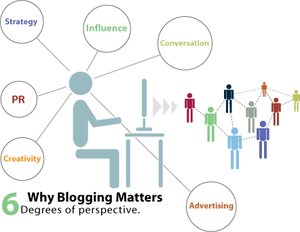

. Media are both a constituency and a conduit through which investors, suppliers, retailers, and consumers receive information about and develop images of a company. The media’s role as a disseminator of information to a firm’s key constituencies has gained increasing importance over the years. Media is interested in satisfying the needs of readers and viewers; they had to meet the public’s growing interest in the private sector and its participants. Hence they no more relegated business news to few back pages.
Organizations irrespective of their size had to build better relationships with the media.
They must take time to cultivate relationships with the right people in the media. The assessment of accomplishment in the media relations business has for years been the amount of “ink” that a company gets, whether aided by in-house professionals or an outside consultant. Getting a lot of ink, means lots of articles written about a company, may not have any value if it doesn’t help the company achieve the communication objective it started out in the first place.
By conducting research, companies can avoid giving reporters’ information that they are not interested in and communications need only occur when a company’s media audience is most likely to be receptive.
Responding to media calls are very important, most of the calls get directed to automated machines which would not differentiate between important and unimportant calls. The best solution for this would be to employ a person just to attend to this. We should make sure when answering such calls to keep a friendly tone when checking the availability for an interview. Next step would be to prepare for media interviews. Depending on the type of interview, the media relation’s professional should prepare the company representative for it. They must make sure they know in depth about the subject they are going to be interviewed about.
Media monitoring and analysis is also an important tool for maintaining healthy relationship with media and helps us gauge our accomplishment with the media.
The most critical component, in media relations is maintaining ongoing relationships with the media which means developing and maintaining a network of contacts with the media.
To build a successful media relation program the basic thing would be to involve the media relations personnel into the strategy, by developing in-house capabilities, we could also use the help from outside counsel.
Media is no more just restricted to paper or television, internet is used on a large scale.
There are various ways to interact online. Blogs are becoming quite a roar as they are publicly accessible personal websites that serves as sources of commentary, opinion, and information on a variety of topics.

Handling Negative news badly: When a company encounters a crisis, the best way to handle it would be to come clean to the media and give their statement before things turn out bad and the company faces downfall.
http://tenant.net/Organize/media.html
http://www.personal.co.za/media-relations-cape-town.htm
The above article gives us an overview of managing media relations and also listed is a website of a media relations consultant’s firm which gives an idea of how things are being done.

Tylenol Crisis of 1982 shows how effective media relations can help diffuse a possible explosive situation and maintain the reputation of the company. Johnson & Johnson the makers of Tylenol capsules immediately recalled all the Tylenol bottles. J & J also advertised in national media not to use the Tylenol capsules. It also put up a $100,000 reward to find the perpetuator of the crime. It also immediately introduced capsules that were triple sealed that were tamper proof and that coupled with heavy price promotions in the media ensured Tylenol retained the #1 brand image.












